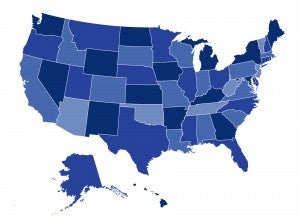Tag: standardized benefit design
Stakeholder Perspectives on CMS’s 2024 Notice of Benefit and Payment Parameters: State Insurance Departments and Marketplaces
Stakeholder Perspectives on CMS’s 2023 Notice of Benefit and Payment Parameters: State Insurance Departments and Marketplaces

After the Biden administration issued the proposed 2023 “Notice of Benefit and Payment Parameters,” several hundred stakeholders provided feedback on the new set of rules governing the ACA’s marketplaces and health insurance standards. To better understand the impact of the proposed rules, CHIR reviewed a sample of stakeholder comments. For the third blog in our series, Rachel Schwab summarizes comments submitted by state departments of insurance and state-based marketplaces.
Stakeholder Perspectives on CMS’s 2023 Notice of Benefit and Payment Parameters: Consumer Advocates

In the recently released 2023 “Notice of Benefit & Payment Parameters,” the Biden administration is proposing significant changes to the Affordable Care Act marketplaces. In the first of a three-part series, CHIR’s Emma Walsh-Alker and JoAnn Volk reviewed public comments from multiple consumer advocacy organizations about the impact of the new policies on marketplace beneficiaries. Reviews of comments from insurers and state marketplaces and insurance departments will follow.
Tackling “Analysis Paralysis”: New Federal Proposal Would Bring Standardized Benefit Design Back to the Federally Facilitated Marketplace

The Affordable Care Act’s health insurance marketplaces and consumer protections significantly improved the experience of purchasing individual health insurance, but consumers still face the difficult task of comparing a potentially overwhelming number of complicated benefit and network designs. A proposal in the Notice of Benefits and Payment Parameters for 2023 may improve this situation. Karen Davenport takes a look at the possible return of standardized plans to the federal marketplace, and what this change might mean for consumers.
State Efforts to Standardize Marketplace Health Plans Show How the Biden Administration Could Improve Value and Reduce Disparities

The federal government is moving forward with standardized benefit designs via HealthCare.gov, following in the footsteps of several states. In their latest post for the Commonwealth Fund’s To the Point blog, CHIR experts Justin Giovannelli, Rachel Schwab, and Kevin Lucia assess the experience of these states with standardized plans and draw lessons for federal officials.
A Fixer Upper: Washington State Enacts Legislation to Boost its Public Option

Washington State enacted a first-of-its-kind public option, with the state-procured plans available beginning in 2020. But the inaugural year yielded underwhelming results, with fewer than 2,000 people enrolled in the plans and premiums that were on average higher than the prior year’s rates. After identifying several barriers to the program’s success, Washington enacted legislation this year to bolster the state’s public option.
Simple Choice Plans Debut on Healthcare.Gov

Simple Choice plans, standardized benefit designs with fixed cost-sharing amounts and pre-deductible services, are new this year on Healthcare.gov. These types of plans can help consumers make “apples-to-apples” comparisons, but the the availability of such plans depends on insurer participation and local markets. Emily Curran and others here at CHIR take a look at the availability of Simple Choice plans on Healthcare.gov and find it’s a mixed bag.
When Policy Isn’t Put Into Practice: State-Based Marketplaces Fail to Meet Goals of Standardizing Benefit Designs

As the federal insurance marketplace moves forward to standardize health plan benefit designs, what lessons can be learned from the state marketplaces that have had similar policies in place since 2014? A new Georgetown report examines the experiences of four state-based marketplaces and finds they have largely failed to meet their policy goals.



